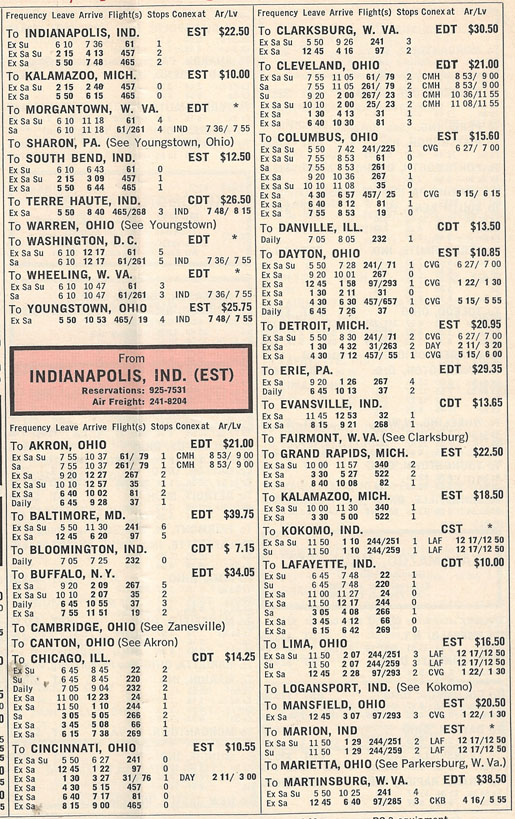Another local service carrier to utilize smaller types was West Coast Airlines, which ordered 4 PA-31 Navajos from Piper for delivery in 1967 to provide service to small communities as the DC-3 fleet was phased out. This aircraft was actually considered to be an executive type, and West Coast was reportedly the first to use it in airline service.
Prior to the Navajos entering service, West Coast operated Piper Aztecs, which I suspect may have been provided by Piper as an interim aircraft until the Navajos could be delivered. In the January 16, 1967 timetable, it appears that 2 Aztecs were in use, one operating between Roseburg and Eugene, and the other connecting Sun Valley and Burley/Rupert to Twin Falls.
 |
| West Coast Airlines January 16, 1967 timetable |
 |
| Aztec service in January 16, 1967 timetable (click to enlarge) |
The Navajos, dubbed "Miniliners", operated with a single pilot and carried up to 7 passengers. They entered service in the Spring of 1967, and by the end of the year, all 4 were in service, concentrated on the same areas served by the Aztecs, Southern Idaho and Western Oregon. The December 1, 1967 issue shows that in Idaho, the Navajos connected the smaller communities to Boise and Salt Lake City, while in Oregon, Bend/Redmond and Roseburg both saw service to Eugene and Portland. Additionally, the 2 service areas were connected by offering a daily Boise - Portland flight (via Payette/Ontario and Baker) that allowed the exchange of equipment.
 |
| West Coast Airlines December 1, 1967 timetable |
 |
| Navajo "Miniliner" service in December 1, 1967 timetable (click to enlarge) |
In 1968, West Coast Merged with Bonanza Air Lines and Pacific Air Lines to from Air West. At first, Air West continued to utilize the Navajos in much the same way as West Coast, providing 3 daily flights on a number of those routes.
 |
| Air West February 1, 1969 timetable |
 |
| Navajo Service to Sun Valley |
 |
| Navajo Service to Roseburg, OR |
But changes were in the air, and by the spring of 1970, Air West had simplified its fleet by getting rid of both the Navajos and the 727's that it inherited from Pacific Air Lines in the merger. While service to Sun Valley and Burley/Rupert was eliminated (those stations having been consolidated with Twin Falls), in other communities, the carrier's offering was reduced to a single daily F27 frequency on each route.



















